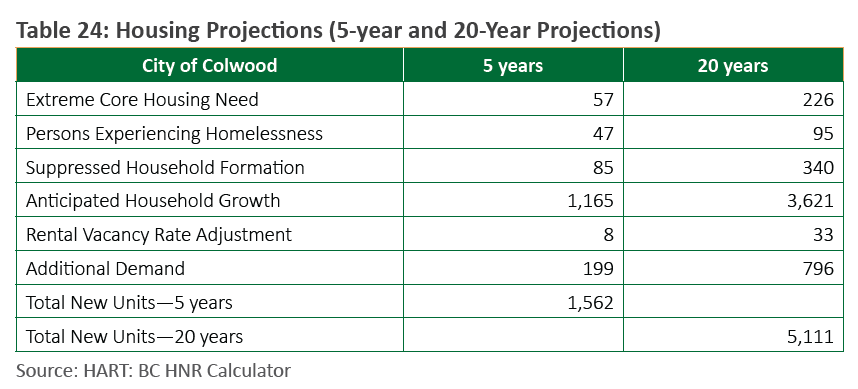Housing Needs Report and Housing Progress Reports
The 2024 City of Colwood Housing Needs report [PDF/3.7MB] is part of a provincial approach to identifying and addressing housing needs. BC Government Housing Needs Reports help identify current and projected gaps in housing supply by collecting and analyzing quantatative and qualitative information about local demographics, development trends, economics, housing stock and other factors.
The City has made progress in building a diverse supply of housing, but as outlined in the 2024 Housing Needs Report, Colwood continues to grow and will need to support the construction of a variety of housing types to meet the needs of existing and future community members.
This includes, but is not limited to, supportive and affordable housing options, family-oriented units, and senior accommodations to ensure that everyone, regardless of their circumstances and incomes, can find suitable living arrangements within Colwood.
By addressing these diverse needs, the City aims to foster a more inclusive and vibrant community. Through strategic planning and thoughtful policy implementation, Colwood can proactively manage its housing development to maintain a balanced growth that aligns with the community’s long-term vision and goals.
What's included in the Housing Needs Report?
All local governments are required to complete either a regular or interim Housing Needs Report by January 1, 2025. Provincial legislation requires updates to Housing Needs Reports every 5 years. They are required to contain the following:
- The number of housing units needed over the next 5- and 20-year period as calculated using the HNR Method, a standardized methodology;
- Statements about seven key areas of local need, including affordable housing, rental housing, special needs housing, seniors housing, family housing, housing in proximity to transit, and shelters and housing for people at risk of homelessness;
- The number and percentage of households in core housing need and extreme core housing need.
- A description of the actions taken by the local government to address housing need since the last Housing Needs Report; and
- The change, if any, in the number of housing units needed since the Last Housing Needs Report.

Provincial Housing Target Progress Reporting
Municipalities are required to report their housing progress to ensure targets have been met or satisfactory progress has been made toward meeting targets.
Progress reports must be received in an open public meeting that is within 45 days after the end of the reporting period. It must then be submitted to the Minister and posted to the municipal website.
Housing Target Progress Report 1.2 [PDF/298KB] - August 1, 2024 - July 31, 2025
Housing Target Progress Report 1.1 [PDF/265KB] - August 1, 2024 - January 31, 2025
See also Colwood Building Statistics
